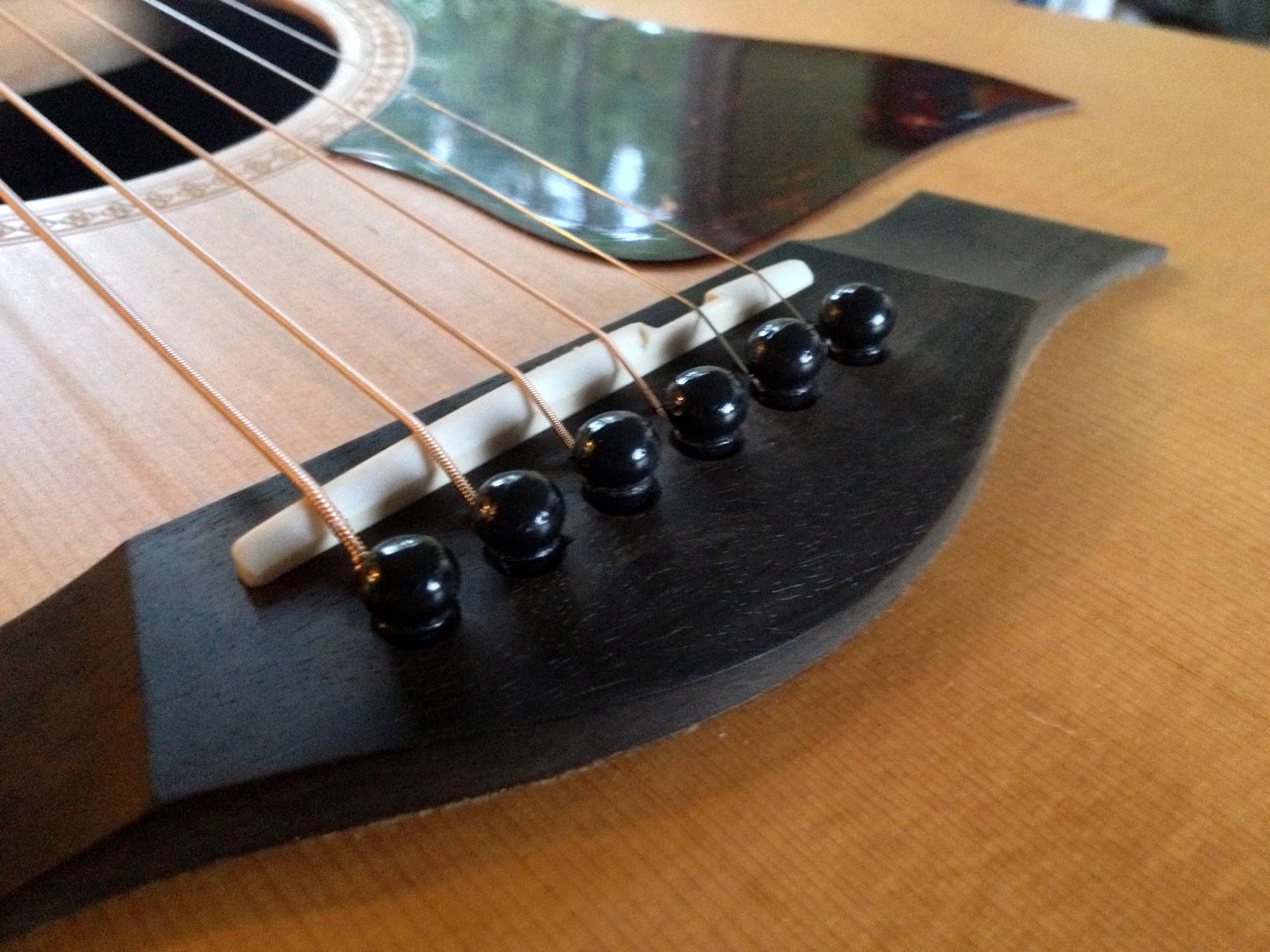sanded entire fingerboard between frets
with 600g sandpaper, twice, then
scraped ever so gently the fingerboard,
especially near the frets with a fresh razor blade.
after that, i sanded the fingerboard again
to remove any small nicks from using the razor blade
with 400g and then finished it off with 600g.
you can now dry-ice skate on this fingerboard! lol
[before]
[after]
the frets were stick out over the edge of the fingerboard,
so i filed them down (without taking meat off the top).
now it's comfortable to play.
after sanding the fingerboard, i used #0000 steel wool and
polished the frets. in doing so, it lightly smoothed them out
which was predominantly noticeable in the first 3 frets.
you can't see your reflection in them, but they are shiney. :D
you can also notice the fret differences in the previous two images.












